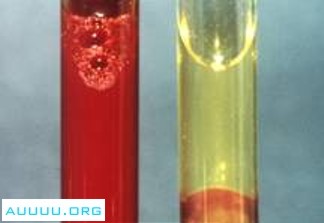|

In an average healthy person, approximately 45 percent of the blood volume is cells, among them red cells (the majority), white cells, and platelets. A clear, yellowish fluid called plasma makes up the rest of blood. Plasma, 95 percent of which is water, also contains nutrients such as glucose, fats, proteins, and the amino acids needed for protein synthesis, vitamins, and minerals. The level of salt in plasma is about equal to that of sea water. The test tube on the right has been centrifuged to separate plasma and packed cells by density.
About 55 percent of the blood is composed of a liquid known as plasma. The rest of the blood is made of three major types of cells: red blood cells (also known as erythrocytes), white blood cells (leukocytes), and platelets (thrombocytes).
|